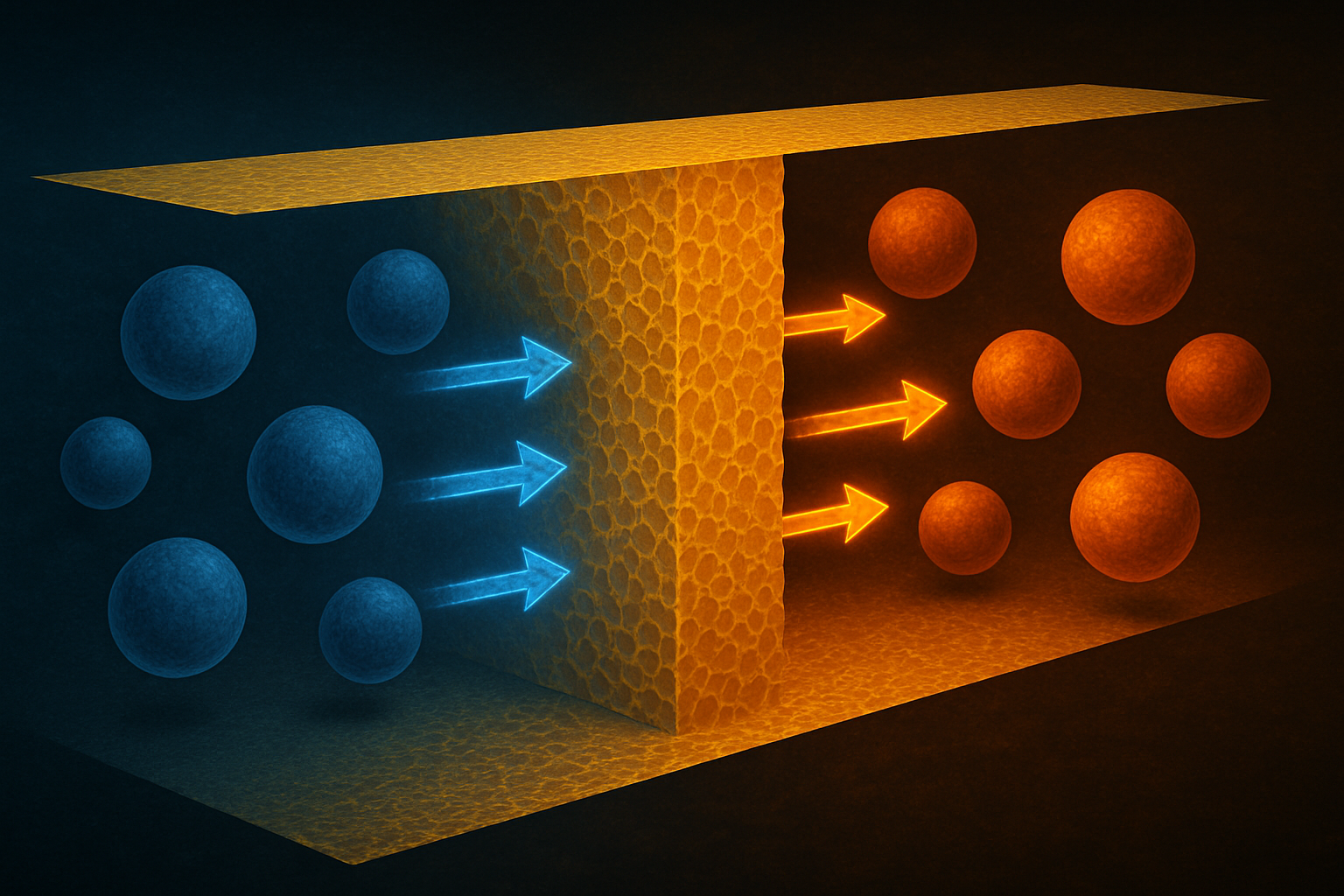Follow us on Google News (click on ☆)
Published in the journal Asymmetry, this research shows that the standard model for understanding these membranes doesn't always follow classical physics laws, particularly Onsager's reciprocal relations. This discovery could change how these materials are designed.

Artist's concept of an ion-exchange membrane.
To study these membranes, researchers often simplify their structure by replacing it with a more measurable schematic. This idealized model uses small charged beads to represent ions. This makes calculations more practical but sometimes leads to unusual results.
Experiments conducted on different types of membranes showed that as ion concentration increases, certain behaviors become asymmetric. This means some reactions don't work the same way in both directions, particularly concerning how water and ions pass through the membrane.
In their tests, researchers measured various flows: water, electric charges, and dissolved substances. They also applied different forces like pressure and concentration differences. They noticed the results didn't always match expectations.
This discrepancy forces us to rethink how we measure and predict membrane performance. Without this reconsideration, we risk misunderstanding their operation.
Violation of Onsager's reciprocal relations
In physics, these relations state that the effects of a force on a flow should be the same in both directions. For example, a concentration difference driving an electric current should have the same effect as an electric voltage moving ions. It's a symmetry rule.
Researchers discovered this symmetry isn't always maintained, possibly due to interactions within the membranes.